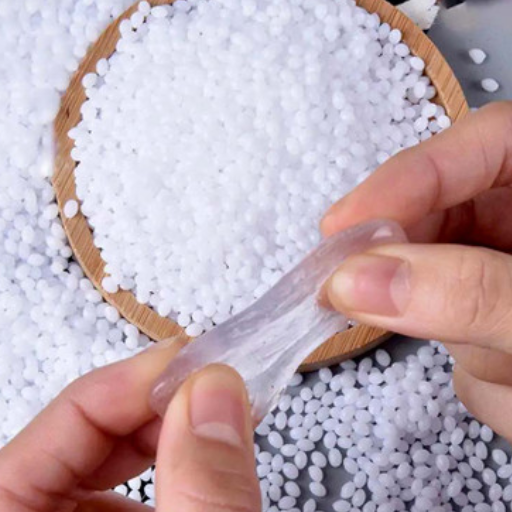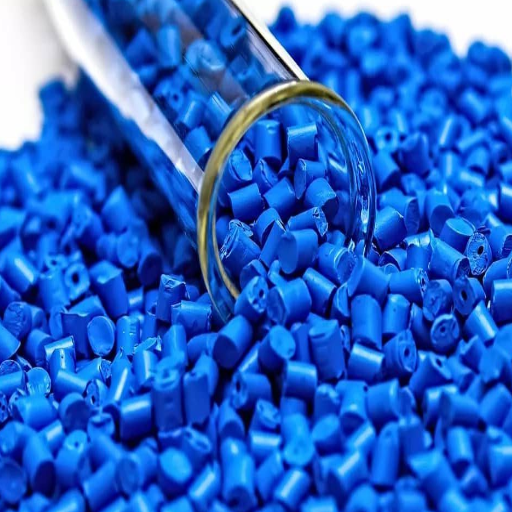Resin pellets are used in the majority of manufacturing processes since they serve as the basis for many products. This blog focuses on the role of resin pellets in injection molding and other forms of manufacturing. We will discuss what resin pellets are, the different types of it, and how their quality affects overall production efficiency. Also, we’ll discuss optimal procedures when processing and handling pellets to achieve maximum performance and quality in performance and end product. From manufacturers interested in improving their operations to any curious learners wanting to delve into modern production, this guide is for everyone. So, let’s explore the reason and use of resin pellets and how they add value to the world of manufacturing.
What Are Resin Pellets and How Are They Made?
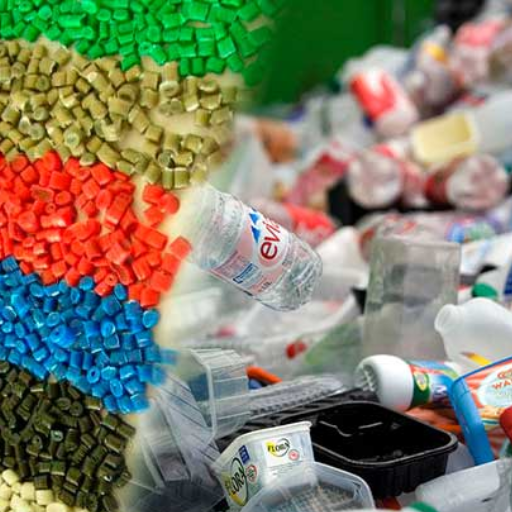
Among the processes I studied for achieving polymerization, I landed on one that seems favorable. This polymerization process involves the preceding steps of creating monomers and bonds, cooling and THEN chopping them into pellets. These pellets are greatly used in the economic manufacturing of plastics and prescribed polymers. Such a process can be achieved through formulation of different polymers and grouping them into polystyrene, polypropylene, and polyethylene. These types of pellets work greatly in injection molding and extrusion as well.
Understanding the Plastic and Resin Compounds
The purpose of chemical compounds plastics and resins is to classify them according to their structure and use. Generally, it is accepted that there are two kinds of plastics, thermoplastics and thermosets. Examples of thermoplastics are polyethylene and polypropylene which can easily be reshaped and thus have the potential to be recycled. Thermosets on the other hand, which include epoxy and polyester resins, harden after curing making them difficult to reshape but providing them with heightened durability and heat resistance.
For different products, resins are used as the foundational ingredient owing to their versatility which gives them the ability to be molded into various shapes and forms. Resins are primarily made of polymers which give them characteristics such as strength, flexibility, and electrical conductivity. Products that contain UV light, have the ability to resist flammable materials, or have the ability to change color can further have their properties enhanced during the manufacturing process.
Different kinds of industries like packaging, automotive, electronics, and construction are heavily dependent on plastics and resin compounds. In terms of the material used, is completely dependent on the cost, mechanical performance, and environmental factors. As there is more awareness for sustainability, the development of bio-based resins and recyclable polymers is increasing to reduce the impact of environmental concerns that come with synthetic plastics.
Manufacturing Process: From Polyethylene to Granule
A series of sequential steps is followed for the production of polyethylene granules to achieve repeatability and uniformity. The whole process contains the following steps:
Polymerization
Polyethylene is produced via polymerization of ethylene gas. This can occur through either high-pressure techniques (for low-density polyethylene or LDPE) or low-pressure techniques (for high-density polyethylene or HDPE). Technical parameters:
– Temperature: 70–300°C (depending on process type).
– Pressure: 1-200 MPa (high pressure processes).
– Catalyst used: Ziegler-Natta or metallocene for catalysts control polymer chain length.
Extrusion
During this phase, additives like stabilizers or pigments can be mixed to improve attributes and the molten polyethylene is extruded through a die to produce a continuous shape.
Cooling and Solidification
The solidification is done in a controllable manner so that the shape is easier to handle.
Pelletizing
Chopping of solidified polyethylene strands is done to granules of uniform size, typically 2-5mm. This is done for easy transportation and usage in downstream manufacturing.
Every step of the process is followed in care to ensure that the resulting granules are up to the modern standards of mechanical strength, thermal stability, and compatibility with any design the end product has.
Role in Creating Plastic Products and Plastic Components
The reasons for pelletized polyethylene’s popularity lies in its properties to be used in the bottom building block for various items, components and products made of plastic. Items such as automotive parts, medical devices, and even packaging materials can be manufactured using everyday industrial techniques like injection molding, extrusion, blow molding, and others that utilize melting and molding of granules. Numerous applications of polyethylene are facilitated by selecting grades or formulations compatible to its thermal, mechanical or chemical aspects thus tailoring the final output. The granules’ uniform size leads to smooth processing and enhanced productivity throughout industries which in turn positions them as vital intermediaries in the supply chain framework of plastic production. Moreover, these aspects emphasize the importance of polyethylene in the globalized economy as it seeks to provide materials that are both remarkably versatile and durable.
How Do Plastic Resin Pellets Impact Injection Molding?
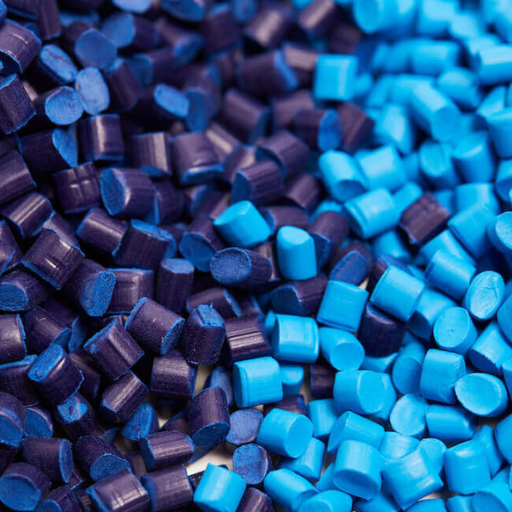
Raw materials for the injection molding process include plastic resin pellets, which serve as the primary building block. Their shape and size are identical, which guarantees reliable melting and flow within the system, thus enabling the production of exact and high-quality molds of plastic components. Depending on the type of polymer used, resin pellets can be customized to meet certain requirements like strength, pliability, or temperature resistance. Furthermore, the ease of handling and metering these pellets into the molding machinery enhances production speed and reduces waste, thus proving to be important for modern manufacturing systems.
The Importance of Density and Diameter in Injection Molding
These factors alongside other dimensional features, such as the density and diameter of the material, significantly influence the productivity and economy of the injection molding operation. We already mentioned the material’s density in the context of its impact on the part’s strength. Equally important is how the density affects the weight and structural integrity of the end component. Using strong and durable products such as high-density polyethylene (HDPE) implies the use of high-density resins while lower-density materials are preferred for applications requiring flexibility or lighter weight. The density in question is usually expressed in terms of grams per cubic centimeter (g/cm³) and varies with the type of polymer considered. For instance, HDPE has a density of approximately 0.93 to 0.97 g/cm³.
Each of the parameters has its own individual impact on the molding process, but they are all interconnected, for example, pellet diameter. This particular ratio impacts the accuracy of the entire molding cycle as uniform pellets guarantee uniform melting and feeding to the injection molding machine. This, in turn, results in reducing the chances of clogs or inconsistencies in the product. Like every part of engineering, there’s a standard, which according to my research is the standard range of 1 to 5 mm in pellet diameter which coincides with the specifications of the majority of injection molding equipment for enhancing material flow and reducing the difficulties during processing. A change in these parameters could result in uneven melting, unequal pressure, or imbalance which corresponds to a change in the density and size of the pellets producing a wide range of flaws in the molded parts.
Ultimately, picking a resin with the correct density and maintaining consistent pellet diameter are both essential for attaining exact and exceptional results, as well as improving the efficiency and sustainability of manufacturing processes.
Advantages of Grade Resin for Custom Injection Molding
Employing grade resin in custom injection molding has many benefits that improve product quality as well as the efficacy of processes of production. Enhanced resins have higher mechanical properties such as strength, flexibility, and endurance which ensure that the parts that are finally molded will meet the required performance standards. Moreover, such resins have good heat resistance as well as stability which minimizes the chances of deformation during molding, production, and even in end-use applications.
Some other advantages include high customization possibilities which permit manufacturers to choose resins based on the needs of the application, reinforced grades for mechanical strength or UV grading for places of greater exposure outdoors. Defect reduction alongside the Enablement of steady flow contributes to grade resins improving process efficacy alongside contributing to consistency. This helps in the reduction of waste, cycle times, and improvement of time efficiency.
Lastly, stronger resins include eco-friendly features as well as recyclable materials or biobased substitutes. These enable manufacturers to lower their ecological impact while fulfilling customer satisfaction of green productsand improving environmental initiatives.
Challenges: Avoiding Mold Pollution and Defects
While solving issues regarding mold infestation and other types of pollution, I always emphasize the need for clean and controlled production and process environments. For the manufacturing area, adequate ventilation and humidity control goes a long way in eliminating excess moisture that is responsible for mold growth. Secondly, I use cleaning procedures and maintenance schedules that eliminate contamination which can be detrimental to the process. Closing on overheating and surface defects, I make sure to employ high-grade and well-fabricated molds that contain advanced cooling systems to eliminate warping and surface imperfections. With those measures in place, I am able to achieve consistency in results and maintain them at a high level.
Why Are Resin Pellets Used as Cornhole Bag Filler?
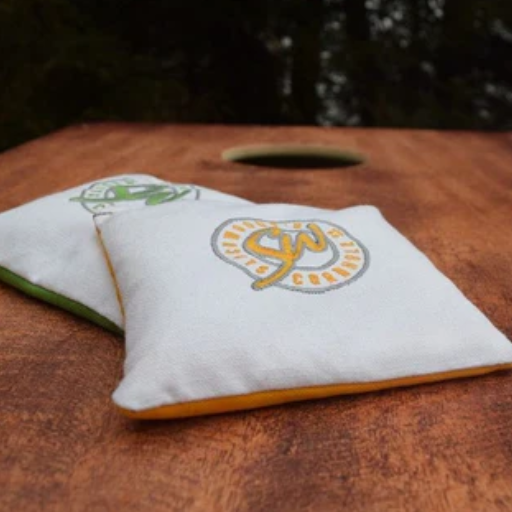
In addition to these advantages, the availability of resin pellets makes them the ideal cornhole bag filler because of their cross-section weight, durability, and resistance to weather. Their smooth and uniform cross section guarantees even and effortless throw which is crucial for competitive play. Mold formation is greatly hindered nothing is absorbed eed therefore the performance of the bag is ensured over a long period of time while still enabling protection from moisture. Lastly, their durability grants accessible value to amateur or elite players.
Benefits of Plastic Resin Pellets in Bean Bags and Cornhole Bags
For filling bean bags and cornhole bags, plastic resin pellets work best as they provide consistency, longevity, and resistance to the elements. From my experience, the mold and smooth gameplay possible with resin pellets make them ideal for professionals and casual players alike. Unlike organic fillers, resin pellets don’t soak up moisture which means they won’t grow mold, making them waterproof. This also helps in extending the lifespan of the bags. Additionally, they don’t decompose over time which helps in maintaining their structure and performance, making them cost effective.
Comparing Synthetic vs. Traditional Bag Filler
When comparing traditional and synthetic fillers, there are other factors to consider such as performance, durability, and maintenance. Synthetic fillers like resin pellets get the spotlight for their lack of variability. Smooth and precise gameplay with accurate throws is ensured due to the consistent weight and size, leading to a positive experience for amateur and professional players alike. Besides that, they are also impermeable to moisture and other environmental factors so they don’t degrade, clump, or mold. Because of this, they’re very durable and low maintenance, helping save time and effort in the long run.
For some players, traditional fillers, such as sand or corn, may provide a nostalgic touch, especially useful in recreational settings. These materials are, however, susceptible to moisture absorption, which is a precursor for mold growth and clumping. Moreover, they tend to deteriorate or lose structure over time, which increases the rate of replacement needed due to a lack of consistent performance. Although traditional fillers do have a lower initial cost, cost-effectiveness is undermined by the higher reliability and durability offered by synthetic materials. The decision of whether to use synthetic or traditional fillers depends on the desires and concerns of the player.
Choosing the Right Pro Cornhole Pellet for Performance
Choosing pro cornhole pellets is an important decision because the material, weight uniformity, and overall durability directly impact one’s gaming experience. Most professional players go for the best grade pellets made of resin because of their stability and moisture resistance. Such pellets are weather resistant which means they maintain their shape over time and provide a consistent throw regardless of season. Corn and sand are traditional fillers that are relatively cheaper but break down easily which leads to uneven weight distribution and lesser lifespan.
Such players seeking pellet maintenance can achieve superior control and accuracy during games by using resin fillers with the mentioned characteristics.
What Types of Plastic Resins Are Used to Make Plastic Pellets?
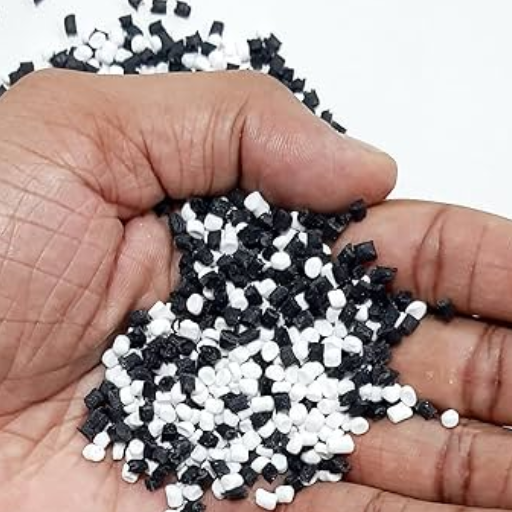
The beanbags and cornhole bags used in leisure activities are often made with plastic pellets crafted from top-tier durable resins. These include polyethylene, polypropylene, and polystyrene. As with other products, plastic resin polyethylene is commonly processed because of its strength and ability to withstand compressive and abrasive forces during maneuvers associated with frequent use. Light load-bearing resistance of polypropylene along with smooth surfaced rigid polystyrene that offers strength makes both of these plastics ideal as well. The primary reason these resins are selected is due to being able to endure outdoor exposure, undergo constant sweating, and prevent dampness or mold attacks that would otherwise affect play equipment.
Exploring Different Polymer Compounds
Synthetic compounds hold distinct advantages due to their varying structure, making them applicable across multiple uses. Case in point, having unparalleled durability, chemical stability, and flexibility makes polyethylene a well-regarded plastic. Its low density combined with impregnated strength and superb damp heat along with the endurance of dividing stimuli shifts makes polypropylene ideal for automotive, textile, and even surgical components. Rigid polystyrene flat-topped with grade A polish is favored in the manufacturing reagents of insulation, disposable casts, and other models as well. In an expanding spectrum of industries, from manufacturing to consumer goods, these polymers are commended, as they collectively unify high practicality alongside performance.
The Role of Thermoplastic and Polypropylene
The ability to repeatedly soften, reshape, and efficiently recycle thermoplastics makes it indispensable in contemporary manufacturing. One polypropylene example of a thermoplastic is easy to use for making automotive components, packaging, and even medical devices because it has low density, high chemical resistance, and excels in durability against fatigue. It does have some technical parameters as well. Its melting point is approximately 130-171°C, while its density varies from 0.89 to 0.92 g/cm³. In terms of tensile strength, it usually stands at around 30-40 MPa. Its attributes in conjunction with its low cost highlight the usefulness of polypropylene in industrial and commercial settings.
Understanding Polystyrene and Plastic Bottles Recycling
Polystyrene and plastic bottles are essential objects which are fundamental in our modern way of life. Recycling of these objects can prove useful in conserving tend and resources. One of the most frequently used forms of polystyrene is as a material of insolation and packaging. For bulk and lightweight use, recycling proves advantageous. With the aid of compacting and chemical recycling, these processes are proving to be more effective and easier to operate. Clean polystyrene is usually of better quality than contaminated material, which assists in processes like insulation board or picture frame production.
Plastic bottles are manufactured with polyethylene terephthalate, more commonly known as PET. This form of plastic is easily recyclable and accepted by curbside programs. During the recycling process, the bottle needs to be sorted, and cleaned, and then the plastic shredded. The end product is various items like containers, clothing fibers, and more plastic bottles. To maintain cleanliness and efficiency, proper labeling and rinsing of the bottles is crucial to avoid contamination.
Polystyrene, plastic and resource recycling prove to be useful on many levels. With the aid of advanced technologies, the processes for plastic recycling have proven helpful. Implementing better recycling techniques, educating the general public, expanding infrastructure, and providing easier access to contamination-free zones will all prove beneficial.
How Are Resin Pellets Used as Industrial Raw Material?
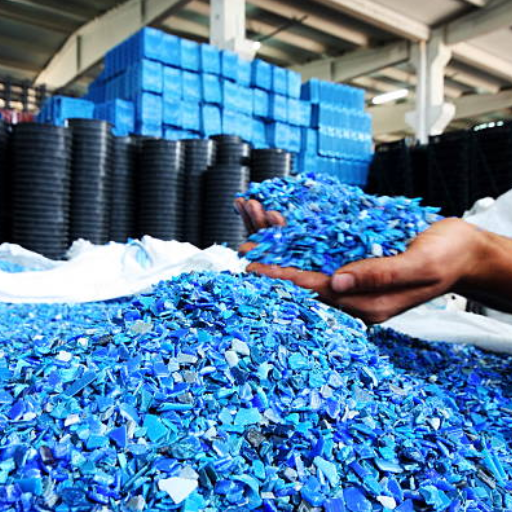
Resin pellets are used across many different forms of industry as these resin pellets are extremely versatile and applicable. Components and containers for vehicles, households, and even textile goods are melted, and these small uniform pellets are used to manufacture products. Their thermoplastic characteristics enable repeated heating and reshaping which makes them perfect for injection molding, extrusion, and blow molding. A further expanding range of industries that can be exposed to resin pellets comes from combined additives that improve strength, flexibility, or resistance to environmental elements.
Applications in Various Plastic Product Industries
Resin pellets are important to various industries as they turn out products that fulfill their specialized requirements. The following includes a brief overview of some industries that make use of resin pellets:
- Packaging Industry
Polymers like high density polyethylene (HDPE) or polyethylene terephthalate (PET) with good flexible strength and resilience must possess high tensile strength inters (s) above 300°F (150°C) yielding buffers between 230 and 260 °F.* Included under these Machining Office Supplies are containers, bottles, cans, and packs.
- Automotive Industry
Resin-based plastic components such as dashboards, bumpers, and fuel caps are manufactured with crude polypropylene (PP) or acrylonitrile butadiene styrene (ABS) to capture impact resistance adept at withstanding tremendous force, yielding good impact strength. These materials have melting points between 320 to 392°F (160-200°C).
- Construction Industry
PVC is often selected as a structurally durable option when producing rigid insulation and PVC flooring panels. This material has operating temperatures between -13 to 140 °F (-25 to 60 °C).Resin pellets have become essential in modern manufacturing due to their adaptability, compatibility with additives, and ability to meet particular technical criteria.
- Consumer Goods
Items such as containers, toys, and cooking utensils are included in the household thermoplastic resin products. For everyday use, these products are made with low tensile strength inters (around 230°F or 110°C) along with good strength.
- Textile Industry
Resin pellets create synthetic fibers like polyester for fabrics. PET-based pellets with a melting point of 500 °F (260°C) are spun into fibers and rheologically processed into high-performance polymer fibers.
Their adaptability, compatibility with additives, and ability to meet specific technical requirements make resin pellets a backbone of modern manufacturing.
Contribution to Sustainable Recycle Practices
Manufacturers lessen their dependence on virgin resources and shrink their environmental impact by incorporating recycled materials. These practices are enhanced by the role resin pellets enable in the recycling ecosystem. For instance, thermoplastic resins can be melted and remolded repeatedly, enabling a circular lifecycle for products. Moreover, innovations in pellet production, including the development of bio-based and biodegradable resins, provide alternatives that naturally decompose and lessen environmentally harmful waste. Resin-based materials such as PET and PVC, are increasingly being adopted in closed-loop recycling systems where they are collected, processed, and reused which drastically cuts carbon footprints. These advancements are in resonance with global initiatives aimed at fostering environmental conservation and tackling plastic pollution.
International Pellet Watch: Monitoring Pollution Levels
IPW, or as it is International Pellet Watch, organizes the world on an international level to monitor pollution by collecting plastic resin pellets from the country’s shores. These plastic pellets, which are also called “nurdles,” are precise-forming plastics because they can absorb POPS such as PCBs and PAHs. With the IPW collecting and screening the pellets for hazardous chemicals, numerous benefits for the area are imagined. By checking the pellets and their area’s chemical structure, IPW gives valuable and precisely needed data to check the existence of deadly chemicals.
The results derived from IPW underscore the universal concern of marine plastic pollution and serve as a significant asset for environmental appraisal. IPW works with citizen scientists, researchers, and advocacy groups to help the public understand the effects of plastic waste while assisting policymakers in developing strategies to control its impact. These practices demonstrate the need to control microplastic pollution to protect marine ecosystems and human health.
References
Frequently Asked Questions (FAQ)
Q: What are resin pellets and how are they used in injection molding?
A: Resin pellets, also known as plastic resin pellets, are small granules typically cylindrical or disc-shaped, used as an industrial raw material in injection molding. These pellets are melted and injected into molds to create plastic parts.
Q: Why are resin pellets considered important in the manufacturing process?
A: Resin pellets are crucial because they provide a consistent and manageable form of plastic that can be easily melted and molded into various plastic parts, ensuring efficiency and quality in manufacturing and transport processes.
Q: How are resin pellets categorized in terms of their physical form?
A: Resin pellets are usually small granules, often measuring a few millimeters in diameter, which are designed for easy handling and processing in various manufacturing applications.
Q: Can resin pellets be recycled, and if so, how?
A: Yes, recycled resin can be produced from used plastic materials. The recycling process involves collecting, cleaning, and reprocessing these materials to form new resin pellets that can be used again in manufacturing.
Q: What are the environmental concerns associated with resin pellets?
A: One major concern is that resin pellets can be unintentionally released to the environment during manufacturing and transport. These small granules can contribute to pollution if not properly managed.
Q: Are there different types of resin pellets available for various applications?
A: Yes, resin pellets are used in different applications and come in various types depending on the desired properties of the final plastic product, such as flexibility, strength, and temperature resistance.
Q: How can manufacturers ensure the safe transport of resin pellets?
A: To ensure safe transport, manufacturers should use secure packaging and handling methods to prevent the unintentional release of resin pellets into the environment. Regular monitoring and compliance with safety regulations are also important.
Q: What should I do if I have more questions about resin pellets?
A: If you have further questions or need more information about resin pellets, feel free to reach out to us for assistance and additional resources.


